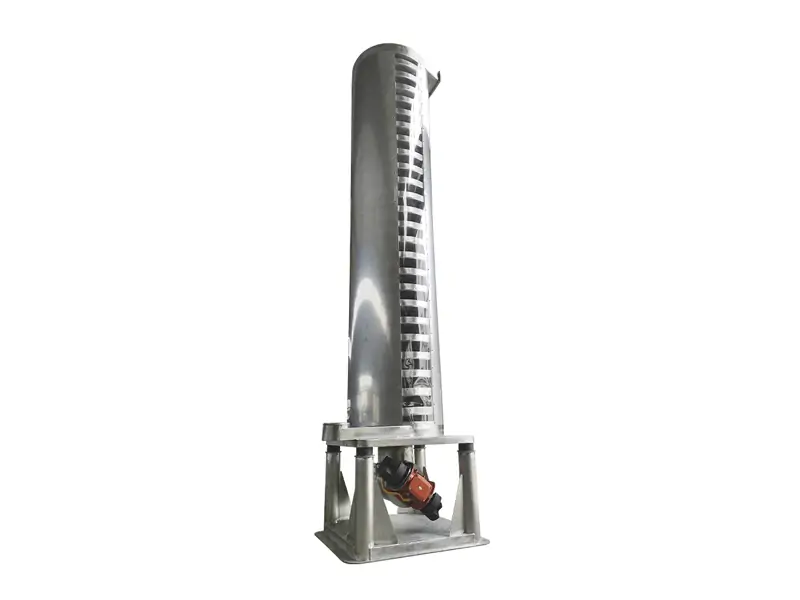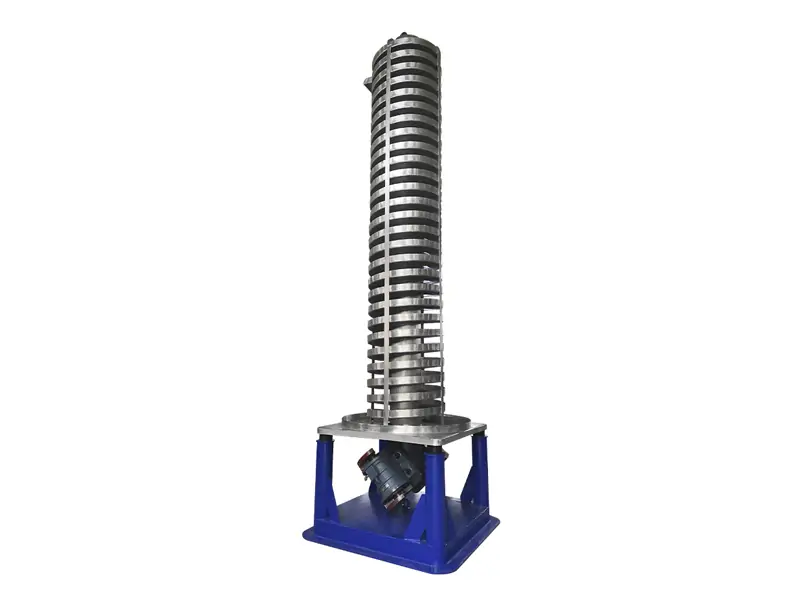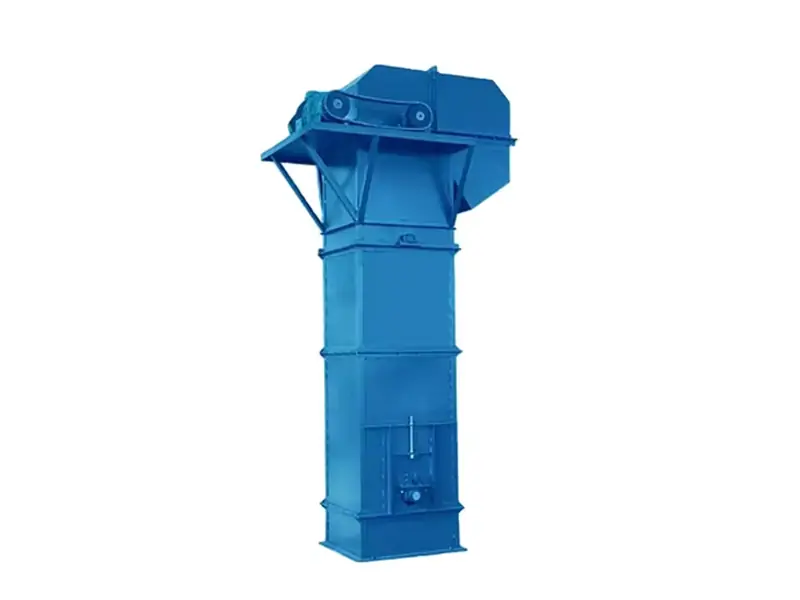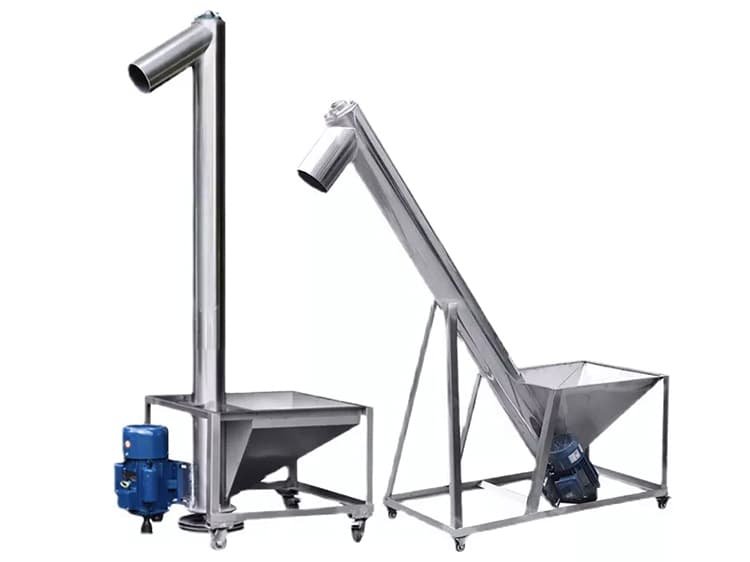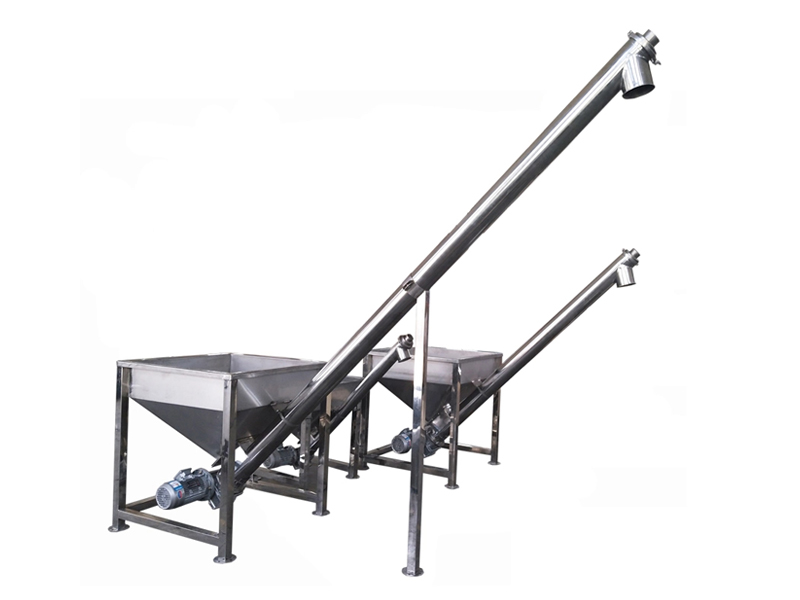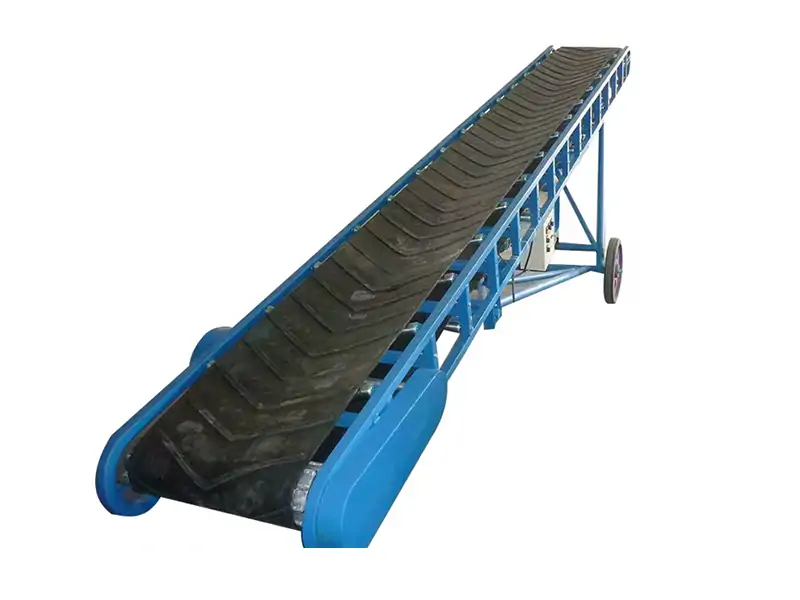To ensure a vibrating spiral elevators runs smoothly, regular inspection and cleaning are key. This includes checking the belt for signs of wear or damage, inspecting the motor and drive mechanism for proper operation, and thoroughly cleaning the system to eliminate the buildup of dirt, debris, or contaminants.
However, ensuring its efficient operation requires regular maintenance and care. This article provides a comprehensive guide to maintaining vertical vibrating spiral elevators, which can help reduce failure rates and extend their service life.
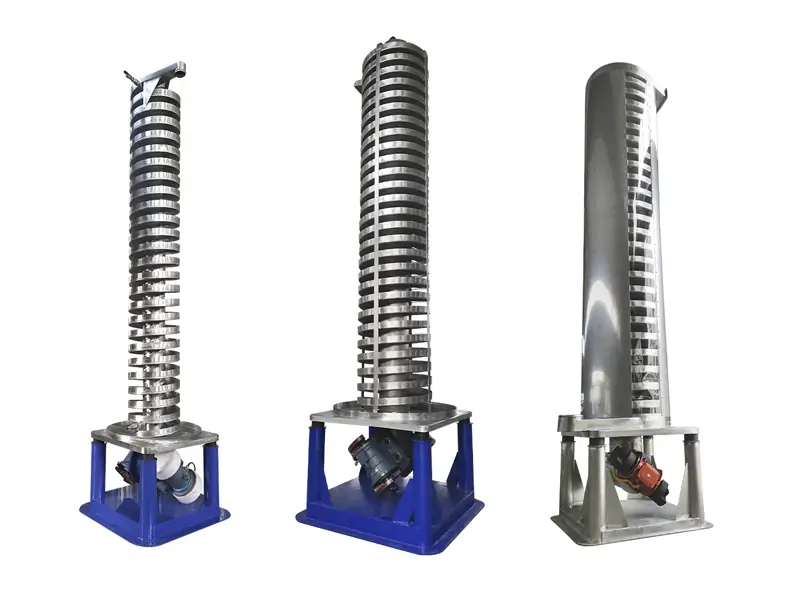
Table of Contents
Understanding the Spiral Elevator Conveyor Working Principle
The working principle of the vibration elevator is to use vibration force to transport granular materials from low to high. Its main process includes: the vibration mechanism (such as an exciter or a vibration motor) generates high-frequency vibration and transmits the vibration to the conveying trough. Granular materials are filled into the conveying trough by gravity or other means. Under the action of vibration force, the materials jump or slide upward along the conveying trough and are gradually transported to a predetermined height. Finally, the materials are guided to the discharge port or other equipment through the upper guide trough to achieve efficient and stable material transportation.
Vibrating Spiral Elevator Conveyor Structures
The vibrating screw conveyor combines a spiral structure with a vibrating mechanism to provide a smooth and continuous flow of material. Its main components include:

Key Components:
- Spiral Trough: The spiral trough is the main structure of the conveyor, in which the material moves in a spiral motion. It can convey materials up or down.
- Vibrating Drive System: The conveyor is equipped with a vibrating mechanism that produces a vibrating motion along the spiral trough. It reduces material friction and ensures a steady, uninterrupted flow. The vibrating action helps prevent blockages and reduces the risk of material blockage, especially with sticky or fine particles.
- Motor and Vibrating Mechanism: The motor powers the vibrating system, driving the movement of the material. The motor can be adjusted to control the frequency and intensity of the vibration, and can also be customized to specific material properties and the required conveying rate.
- Modular Frame and Support Structure: The support frame is the foundation of the spiral trough and vibrating mechanism. It is designed to be strong and stable to support the weight and movement of the material during operation.
- Infeed and Discharge Sections: The infeed and discharge ports can be custom-designed to meet the needs of specific applications, such as integrating hoppers or chutes for smooth material delivery.
7 Steps to Maintain the Vibrating Spiral Elevator Conveyor
In order to ensure the efficient and stable operation of the vibration hoist, reduce the failure rate, and extend the service life of the equipment, regular maintenance and service are necessary. Here are some maintenance precautions:
1. Regular cleaning
- Clean the conveying trough and vibration mechanism: Regularly remove the accumulated materials, dust or foreign matter in the conveying trough to prevent material accumulation or blockage, which will affect the conveying effect.
- Clean the outside of the equipment: Keep the outside of the equipment clean to avoid the accumulation of dust and pollutants, and ensure the heat dissipation and normal operation of the equipment.
2. Lubrication maintenance
- Check and add lubricating oil: Regularly check the lubrication of key components such as vibration motors and exciters, and add or replace lubricating oil as needed to reduce friction and wear.
- Choose the right lubricating oil: Use lubricating oil suitable for the equipment requirements to ensure efficient lubrication and prevent excessive wear or stuck parts.
3. Check the vibration mechanism
- Check the exciter or motor: Regularly check the operating status of the vibration motor or exciter to ensure that there are no abnormal phenomena such as overload and overheating.
- Check the connection parts: Check whether the connection parts of the vibration mechanism are loose, ensure that they are firmly fixed, and avoid loosening or damage of parts due to vibration.
4. Check the conveyor trough and hopper
- Check the wear of the conveyor trough and hopper: Check whether there is wear, cracks or deformation in the conveyor trough and hopper, and repair or replace them in time to prevent affecting the flow of materials.
- Adjust the position of the hopper: Ensure that the hopper is in the correct position and the material can flow into the conveyor trough evenly to avoid uneven transportation.
5. Electrical system inspection
- Check the electronic control system: Check the electronic control system regularly to ensure that all electrical connections are good and the electronic control panel is fault-free to avoid equipment shutdown due to problems with the electronic control system.
- Check the motor current: Monitor whether the motor current is normal to prevent the motor from failing due to excessive load or other reasons.
6. Check fasteners and transmission system
- Check all bolts and fasteners: Check all bolts, nuts and other fasteners of the equipment regularly to ensure that they are not loose to avoid equipment damage or safety hazards due to looseness.
- Check the transmission system: Check the wear of transmission parts such as belts and chains to ensure the normal operation of the transmission system.
7. Regular adjustment and calibration
- Adjust vibration parameters: According to the operation of the equipment, adjust the vibration frequency and amplitude in time to ensure that the vibration hoist operates in the best working condition.
- Calibrate material transportation: Check whether the conveying route is smooth, adjust the guide groove and the discharge port to ensure a smooth material conveying process.
Conclusion
Through regular cleaning, lubrication, inspection, and adjustment, the vibration hoist can maintain the best operating condition, reduce the failure rate, improve production efficiency, and extend the service life of the equipment. Regular maintenance can not only ensure the stable operation of the equipment, but also reduce the downtime and maintenance costs caused by failures, thereby helping enterprises reduce operating risks and improve overall production efficiency.
Related Articles
- How To Clean The Spiral Conveying Layer When Changing Materials?
- How Does A Vibrating Spiral Conveyor Work?
- Vibrating Spiral Elevator For Cooling Plastic Pellets
- Vertical Vibrating Elevator vs Bucket Elevator: How to choose the right vertical conveying equipment?
- Selection Guide for Vibrating Spiral Elevators: Advantages and Disadvantages
